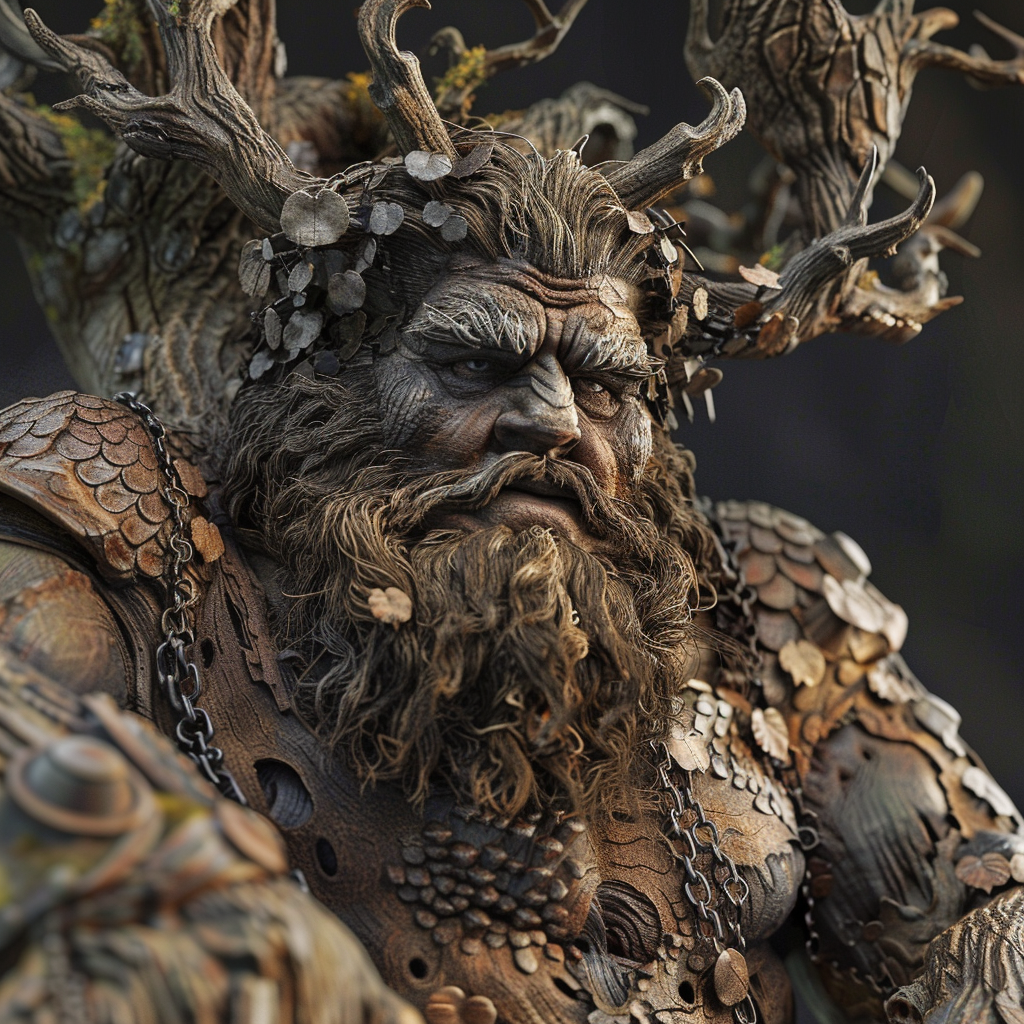Giants, or Jötnar, are one of the most fascinating and complex elements of Norse mythology. They play a crucial role in the mythological narratives, often serving as both antagonists and essential parts of the cosmic balance. Here’s a detailed look at their characteristics, types, roles in mythology, and symbolic significance:
Characteristics of Giants
Terminology and Variants:
Jötnar: The general term for giants in Norse mythology. It can also refer to different types of giants, each with unique traits.
Þursar (Thursar): Another term for giants, often associated with more chaotic and destructive aspects.
Risar (Risi): Typically denotes a giant or a large, powerful being.
Hrímþursar (Frost Giants): Giants associated with ice and cold.
Eldjötnar (Fire Giants): Giants associated with fire and heat.
Physical Appearance:
Giants are typically described as large, formidable beings, often much larger than humans and even the gods. Their size and strength make them formidable opponents.
They can take on various forms, ranging from human-like to monstrous, with some giants depicted with multiple heads or animalistic features.
Habitat:
Giants are usually associated with Jötunheim, one of the Nine Worlds in Norse cosmology, which is a realm of wilderness and untamed nature.
They also inhabit other harsh and extreme environments, such as mountains, forests, and icy realms.
Dual Nature:
Giants embody both creative and destructive forces. They are not merely villains but also represent the primal, untamed aspects of nature and the universe.
Types of Giants
Frost Giants (Hrímþursar):
Associated with ice, snow, and cold. They are believed to inhabit icy regions and are often connected to primordial forces.
Notable Figures: Ymir, the primordial being from whom the world was created.
Fire Giants (Eldjötnar):
Connected to fire and heat, often inhabiting fiery realms such as Muspelheim.
Notable Figures: Surtr, the fire giant who is destined to play a crucial role in Ragnarök.
Mountain Giants:
Linked to the rocky and mountainous landscapes, symbolizing the strength and immovability of nature.
Notable Figures: Hrungnir, known for his immense strength and size.
Sea Giants:
Associated with the oceans and waterways, often depicted as controlling the forces of the sea.
Notable Figures: Ægir and Ran, who rule over the ocean and its creatures.
Role in Norse Mythology
Creation Myth:
Ymir: The primordial giant, whose body was used by the gods to create the world. From his flesh came the earth, from his blood the seas, and from his bones the mountains.
Giants are often seen as the first beings, existing before the gods and playing a key role in the creation and shaping of the world.
Antagonists of the Gods:
Giants frequently oppose the Æsir and Vanir, the two groups of Norse gods. They represent the chaotic forces that threaten the order maintained by the gods.
Notable conflicts include Thor’s many battles against various giants, highlighting the ongoing struggle between order and chaos.
Cosmic Balance:
Despite their antagonistic roles, giants are essential to the balance of the cosmos. They embody the necessary chaos that exists alongside the order of the gods.
Their interactions with the gods often lead to significant events that shape the fate of the world.
Ragnarök:
Giants play a crucial role in the prophesied end of the world, Ragnarök. They are depicted as leading forces in the final battle against the gods, signaling the end of the current cosmic order and the beginning of a new one.
Key figures include Surtr, who will set the world on fire, and Loki, who will lead the giants against the gods.
Notable Giants
Ymir:
The primordial giant whose body became the foundation of the world. He represents the chaos and potential of the universe.
Loki:
Though often considered a god, Loki is actually a giant by birth. His actions and offspring play crucial roles in the myths, especially in bringing about Ragnarök.
Skadi:
A giantess associated with winter and hunting. She marries the god Njord and represents the complex relationships between giants and gods.
Thrym:
The king of the giants who steals Thor’s hammer, Mjölnir, demanding Freyja as his bride in exchange for its return.
A giantess known for being the mother of Loki’s monstrous children: Fenrir, Jörmungandr, and Hel.
Hrungnir:
A giant known for his duel with Thor, which ultimately leads to his demise.
Surtr:
The fire giant who will lead the forces of Muspelheim during Ragnarök and is destined to set the world ablaze.
Symbolism and Themes
Chaos and Order:
Giants symbolize the chaotic and untamed aspects of the cosmos, in contrast to the ordered world of the gods. Their interactions highlight the necessary balance between these opposing forces.
Creation and Destruction:
Giants are integral to both the creation and destruction myths in Norse cosmology, embodying the cyclical nature of existence.
Nature and Civilization:
They often represent the raw power of nature in contrast to the gods’ attempts to create and maintain civilization and order.
Fate and Inevitability:
Giants’ roles in myths often underscore the themes of fate and inevitability, especially concerning the foretold events of Ragnarök.
Giants in Modern Culture
Literature and Media:
Giants have been featured in various works of fiction, movies, and games, often portrayed as formidable adversaries or powerful allies.
Examples: Giants appear in J.R.R. Tolkien’s Middle-earth, Marvel’s Thor comics and movies, and numerous fantasy novels and role-playing games.
Symbolic Influence:
Giants continue to represent the themes of chaos, nature, and the struggle against fate in modern storytelling, reflecting their enduring mythological significance.



